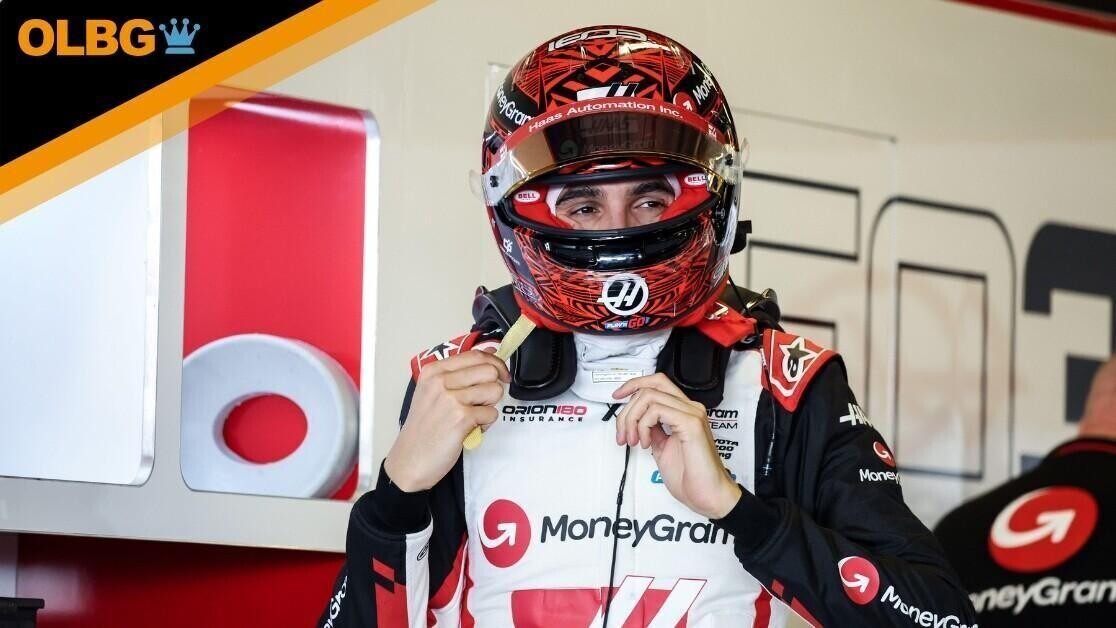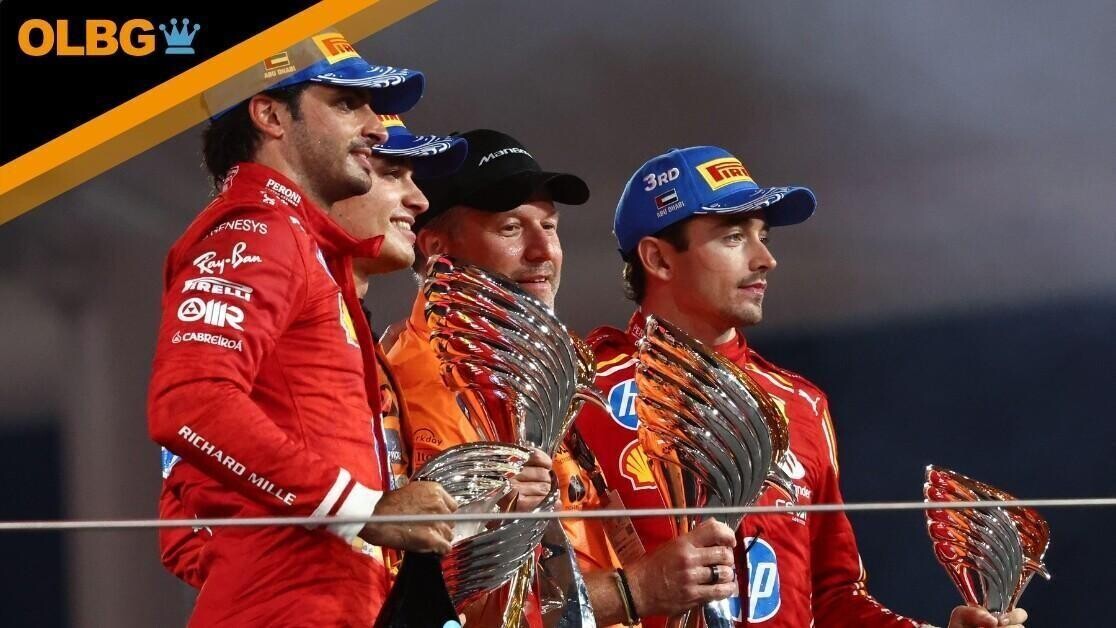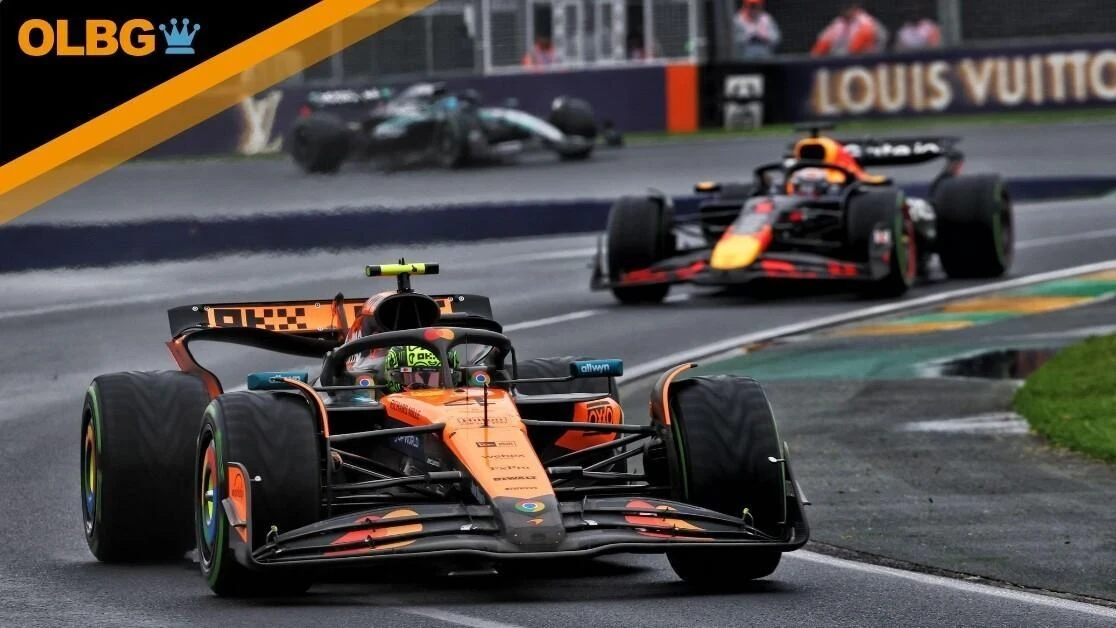
Your data guide to football betting, Dan Tracey shows you where the numbers point before the market catches up.
Constructing An F1 Team
As the 2025 F1 season revs up, Max Verstappen aims for his fifth consecutive F1 Driver’s Championship with Red Bull. Achieving this would place him closer to the record of seven titles held by Michael Schumacher and Lewis Hamilton. Hamilton, now racing for Ferrari, seeks to make history by potentially securing his eighth championship, a goal once overshadowed by the controversial 2021 Abu Dhabi finale. This season presents a thrilling narrative of rivalry and legacy, as Hamilton vies to solidify his status as potentially the greatest F1 driver, a title Verstappen could also contest with future successes.
🏎️ Revving Up for 2025! 🏆
The debate over the best F1 driver is perennial, evolving as new talents emerge. Similarly, discussions about the F1 constructors championship continue. Last season, McLaren dominated as the team with the most points, but questions remain about their place in F1 history. The coming season not only highlights individual competition but also the ongoing tussle among teams vying for historical recognition in the sport's ever-changing landscape.

The Top Motorsport Betting Sites 2025
A Winning Outfit

| Rank | Constructor | Seasons | Starts | Wins | Percentage |
|---|---|---|---|---|---|
| 1 | Ferrari | 1950–2024 | 1098 | 248 | 22.60% |
| 2 | McLaren | 1966–2024 | 970 | 189 | 19.50% |
| 3 | Mercedes | 1954–1955, 2010–2024 | 317 | 129 | 40.70% |
| 4 | Red Bull Racing | 2005–2024 | 393 | 122 | 31.00% |
| 5 | Williams | 1978–2024 | 826 | 114 | 13.80% |
| 6 | Lotus | 1958–1994 | 489 | 79 | 16.20% |
| 7 | Brabham | 1962–1987, 1989–1992 | 394 | 35 | 8.90% |
| 7 | Renault | 1977–1985, 2002–2011, 2016–2020 | 400 | 35 | 8.80% |
| 9 | Benetton | 1986–2001 | 260 | 27 | 10.40% |
| 10 | Tyrrell | 1970–1998 | 430 | 23 | 5.30% |
Sitting top of the list in terms of all-time wins as an F1 constructor, it is Ferrari who sit top of the pile with 248 wins from 1098 races. The ever-present outfit in the championship since 1950 have subsequently won 22.60% of all races entered.
248 wins for the ‘Prancing Horse’, 59 more than McLaren in second and with their true golden eras being the late 80s and the late 90s under the likes of Ayton Senna, Alain Prost and Mika Hakkinen, last year’s top constructor has won a total of 189 races from 970 attempts.
60 more than Mercedes in third and although they would have had an element of success in their first two years of operation between 1954 and 1955, it is the return of the Silver Arrow since 2010 that has earned the majority of their 129 overall wins.
Considering the German marque has only entered 317 races by the end of the 2024 F1 season, it means that Mercedes has won four of every ten races that they have entered – a huge amount of those being thanks to the talents of Lewis Hamilton.
While the same can be said for Max Verstappen’s input at Red Bull and with the four-time and defending World Champion in the seat, the team have won 122 races in total and thanks to their success last year, have also managed to overtake Williams in fifth.
The former home of Nigel Mansell has won 114 races since its entry into F1 in 1978 and although the team is usually found towards the back end of the grid these days, it is still a popular name within the sport.
A Global Success

Which means if Ferrari are picking up the most wins in terms of quantity, it leads to the question of where are these wins being collected?
| Rank | Constructor | Wins | Grand Prix |
|---|---|---|---|
| 1 | Ferrari | 21 | German Grand Prix |
| 2 | Ferrari | 20 | Italian Grand Prix |
| 3 | Ferrari | 18 | Belgian Grand Prix |
| 3 | Ferrari | 18 | British Grand Prix |
| 5 | Ferrari | 17 | French Grand Prix |
| 6 | McLaren | 15 | Monaco Grand Prix |
| 7 | McLaren | 14 | British Grand Prix |
| 7 | McLaren | 14 | Belgian Grand Prix |
| 9 | McLaren | 13 | Canadian Grand Prix |
| 10 | McLaren | 12 | Brazilian Grand Prix |
| 10 | McLaren | 12 | Hungarian Grand Prix |
| 10 | Ferrari | 12 | Spanish Grand Prix |
| 10 | Ferrari | 12 | Canadian Grand Prix |
The answer to that is the German Grand Prix and with the Italian outfit having won this particular race at tracks such as Nürburgring or Hockenheim a total of 21 times, it is one more instance of the champagne being sprayed than at their home race of the Italian Grand Prix.
The famous race at Monza has seen the tifosi celebrate 20 times in total – two more than when Ferrari have picked up 18 respective wins at both the Belgian and British Grand Prix and this is one more than the 17 overall wins at the French Grand Prix.
After Ferrari’s dominance at certain Grand Prix, the baton is then handed over to McLaren with 15 wins at the Monaco Grand Prix. All of these wins being collected since 1984 onwards as it quickly became a playground for both Alain Prost and Ayrton Senna.
15 wins at Monaco to go alongside the 14 respective victories at the British and Belgian Grand Prix. The first of the home wins coming in 1973, the most recent success for McLaren then following 35 years later in 2008.
In addition to this, 13 wins were collected at the Canadian Grand Prix. One more than the dozen of victories that McLaren collected at the Hungarian and Spanish Grand Prix respectively – the same number that Ferrari have also won at Spain and Canada.
Top Three Finishes

If that criteria offers an insight into where victories are being picked up, we should also get a gauge of consistency and how important a team effort can be in F1. To do so, we can also look at the teams that have collected the most podiums over the years:
| Rank | Constructor | Podium finishes | Seasons |
|---|---|---|---|
| 1 | Ferrari | 829 | 1950–2024 |
| 2 | McLaren | 524 | 1966–2024 |
| 3 | Williams | 313 | 1978–2024 |
| 4 | Mercedes | 298 | 1954–1955, 2010–2024 |
| 5 | Red Bull Racing | 282 | 2005–2024 |
| 6 | Lotus | 172 | 1958–1994 |
| 7 | Brabham | 124 | 1962–1987, 1989–1992 |
| 8 | Renault | 103 | 1977–1985, 2002–2011, 2016–2020 |
| 9 | Benetton | 102 | 1986–2001 |
| 10 | Tyrrell | 77 | 1970–1998 |
Top of the shop is Ferrari who have been able to amass a total of 829 podium finishes between the two-car entries that would enter each Grand Prix. That figure sees them sit 305 clear of McLaren in second with Williams sitting a further 211 podiums behind in third.
While the race for fourth is certainly an interesting one and one that could see positions changed within the next year or so. Mercedes currently holding on to the berth with a total of 298 podiums, Red Bull only 16 behind with 282.
These are five active teams that will be taking part in the 2025 edition of the F1 global circus, the other five that make up the top 10 give a look back at racing’s past. Lotus under the brilliant mind of Colin Chapman collected 172 podiums to secure sixth place.
That tally is 52 more than Brabham in seventh and with the eponymous team setup by Jack Brabham, this entry has 21 more podiums than Renault in eighth with 103 – one more than Benetton that is shares a lineage with.
The Benetton team that collected two Driver’s Championships under Michael Schumacher in 1994 and 1995 would earn 102 podiums before Renault ownership took over in 2002 – a change that would also see Fernando Alonso win the 2005 and 2006 crowns for the French entry.
While rounding out the top 10 in terms of podiums is the Tyrrell team that was in the sport from 1970 to 1998. The team founded by Ken Tyrrell is best known for its displays by the now Sir Jackie Stewart and he would make a sizeable contribution to their 77 overall podiums.
A Different Angle

As always with statistics, there are plenty of angles to analyse from and if we look at the success of constructor’s from a pure win percentage perspective, the angle is slightly different than before:
| Rank | Constructor | Races | Wins | Percentage |
|---|---|---|---|---|
| 1 | Brawn | 17 | 8 | 47.10% |
| 2 | Mercedes | 317 | 129 | 40.70% |
| 3 | Vanwall | 28 | 9 | 32.10% |
| 4 | Red Bull Racing | 393 | 122 | 31.00% |
| 5 | Ferrari | 1098 | 248 | 22.60% |
| 6 | McLaren | 970 | 189 | 19.50% |
| 7 | Lotus | 489 | 79 | 16.20% |
| 8 | Matra | 61 | 9 | 14.80% |
| 9 | Williams | 826 | 114 | 13.80% |
| 10 | Cooper | 129 | 16 | 12.40% |
Especially as the percentage success of Brawn is unlikely to ever be beaten. In 2009, the Brawn F1 team was built out of the ashes of the Honda entry that pulled out at the end of 2008 and was considered as nothing more than a low budget outfit that had been quickly cobbled together.
In fairness, that statement does have an element of truth attached to it but what Brawn’s peers on the grid did not have was knowledge of Brawn’s ace up their sleeve – an ace that comes in the shape of their infamous Double Diffuser.
A piece of engineering that allowed Jenson Button and Rubens Barrichello the opportunity to steal a march on the rest of the class of 2009 and after making hay while the sun shone, this early advantage would be enough to see the former of the two drivers eventually win the Driver’s crown.
Of the 17 races on that year’s calendar, Brawn won eight of them and although their rivals would eventually catch up on a technological front and subsequently begin to nullify the advantage that Button and Barichello would have early on.
That advantage would ultimately see Brawn win eight of those 17 Grand Prix and with a win percentage of 47.1% - just under half the races they ever entered as they became the Mercedes team a year later, this figure looks almost insurmountable in terms of win percentage.
While it is Mercedes themselves who have run Brawn the closest with a win percentage of 40.70% and considering this is a team that has been a fixture of the last 15 championships in an era when more and more races are being added, this feat should not be diminished.
Sitting third is the legendary name of Vanwall, like Brawn they can be considered more of a flash in the pan with a short-term entry in the late 1950s but it is an entry that saw the legendary Stirling Moss at the wheel.
The British marque entered a total of 28 Grand Prix between 1954 and 1960, Moss would win six of them (one shared with teammate Tony Brooks at the 1957 British Grand Prix) helping the team to an overall win percentage of 32.10%.
That percentage puts Vanwall ahead of contemporary outfits Red Bull, Ferrari and McLaren as the lock out the places of fourth through to sixth on this particular grid – with Williams also placed ninth. Rounding out the top 10 are Lotus, Matra and Cooper in seventh, eighth and tenth respectively.
A Single Year

Not only can we look at greatness from a percentage win perspective but we can also look at dominance in a single racing year:
| Rank | Constructor | Season | Races | Wins | Percentage |
|---|---|---|---|---|---|
| 1 | Red Bull Racing | 2023 | 22 | 21 | 95.50% |
| 2 | McLaren | 1988 | 16 | 15 | 93.80% |
| 3 | Mercedes | 2016 | 21 | 19 | 90.50% |
| 4 | Ferrari | 2002 | 17 | 15 | 88.20% |
| 5 | Ferrari | 1952 | 8 | 7 | 87.50% |
| 6 | Alfa Romeo | 1950 | 7 | 6 | 85.70% |
| 7 | Mercedes | 2014 | 19 | 16 | 84.20% |
| 7 | Mercedes | 2015 | 19 | 16 | 84.20% |
| 9 | Ferrari | 2004 | 18 | 15 | 83.30% |
| 10 | Ferrari | 1953 | 9 | 7 | 77.80% |
Dominance that is largely displayed by Red Bull’s incredible 21 wins out of a possible 22 races in 2023. In missing out on victory in just one single race, it gave the team a 2023 win percentage of 95.50% - dominance for the outfit but not the most interesting year for those who follow the sport.
The same could be said back in 1988 when McLaren nearly scooped up a clean sweep of race wins. Between Ayrton Senna and Alain Prost, the red and white Marlboro-liveried car missed out on just one of 16 potential race wins.
At the time, this was an imperious effort from the Ron Dennis-led team and it was worth a 1988 win percentage of 93.80% - 3.30% more than when Lewis Hamilton and Nico Rosberg earned 19 of 21 potential wins for Mercedes in 2016.
While you have to go back to 2002 for Ferrari’s most dominate ever season in percentage terms. That was the year in which Michael Schumacher and Rubens Barichello would collect 15 wins from 17 Grand Prix at a win percentage of 88.20%.
Ferrari also dominated in percentage terms in 1952 and 1953 but this was the burgeoning years of F1 with far fewer races on the calendar and impressive as their performances were in those years, the overall percentages are somewhat inflated – as is Alfa Romeo’s own entry in 1950.
For more considerable percentage values, we go back to Mercedes and their exact same records in 2014 and 2015. Both years saw Lewis Hamilton as the gold standard and both years saw the Silver Arrow win 16 of 19 races to record a win percentage of 84.20%
A slight improvement on another impressive and more considerable number of races from a Ferrari perspective in 2004. That year saw 18 Grand Prix on the calendar and the Italian outfit would romp to victory in 15 of them, giving them a win percentage of 83.30%.
Conclusion
Who is the best of the best? You would have to say Ferrari when all things are considered but they have been in the wilderness for quite some time. They have not won the Driver’s Championship since 2007 under Kimi Raikonnen, could 2025 be their return to greatness?
Source
https://en.wikipedia.org/wiki/List_of_Formula_One_constructor_records



